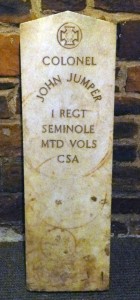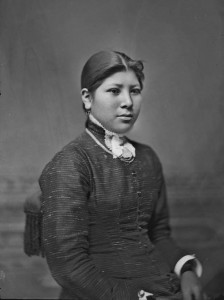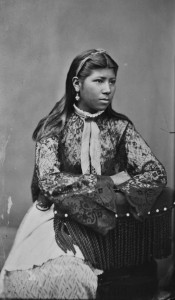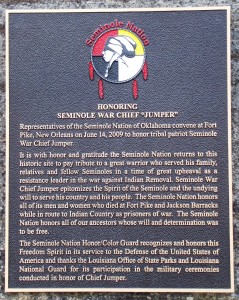Daughter of Seminole Chief John Jumper
Category Archives: John Jumper
Rebecca Jumper
Lieutenant Colonel John Jumper

Lieutenant Colonel John Jumper 1st Regiment Seminole Mounted Volunteers CSA
The Confederacy paid John Jumper the compliment of making him a Lieutenant Colonel, The order read:
“The Congress of the Confederate States of America do enact, That the President of the CSA be authorized to present to Hemha Micco or John Jumper, a commission conferring upon him the honorary title of Lieutenant-Colonel of the Army…but without creating or imposing the duties of the actual service or command or pay, as a complimentary mark of honor, and a token of good will and confidence to his friendship, good faith, and loyalty to the government.”
The monument to John Jumper resides at the Seminole Nation Museum, Wewoka, OK
Jumper, John (ca. 1820–1896)
Chief John Jumper (Hemha Micco) of the Seminole Nation was born circa 1820 in Florida. Although his parents’ names are unknown, he was a nephew of Micanopy. A member of the Baptist church, Jumper became an ordained minister in 1865. He served as the pastor of the Spring Baptist Church near Sasakwa in present Seminole County until 1894.
Jumper fought against the United States during the Second Seminole War (1835–42) and arrived in Indian Territory as a military prisoner. He became the principal Seminole chief following the death of his brother, Chief James Jumper, circa 1849. In 1850 he led a delegation to Florida and encouraged the stalwart Seminole to remove west. As chief, Jumper supported the establishment of Presbyterian schools among his people, and he oversaw the founding of the Seminole Nation in 1856.
In 1861 Jumper reluctantly agreed to an alliance between the Seminole and the Confederate States of America. During the Civil War he served as major of the First Battalion Seminole Mounted Rifles and as colonel of the First Regiment Seminole Volunteers. He participated in the engagements at Round Mountain, Chusto-Talasah, Middle Boggy, and Second Cabin Creek.
Jumper represented the Southern Seminole at the Fort Smith Council of 1865 (the United States recognized the loyal John Chupko as the principal Seminole leader). Jumper was elected chief of a united Seminole Nation in 1882 and was succeeded by his son-in-law, John F. Brown, in 1885. John Jumper died at his home near Wewoka, on September 21, 1896.
Jon D. May
Honoring Seminole War Chief ‘Jumper’
Representatives of the Seminole nation of Oklahoma convene at Fort Pike, New Orleans on June 14, 2009 to honor tribal patriot Seminole War Chief Jumper.
It is with honor and gratitude the Seminole Nations returns to this historic site to pay tribute to a great warrior who served his family, relatives and fellow Seminoles in a time of great upheaval as a resistance leader in the war against Indian Removal. Seminole War Chief Jumper epitomizes the Spirit of the Seminole and his undying will to serve his country and his people. The Seminole Nation honors all of its men and women who dies at Fort Pike and Jackson Barracks while in route to Indian Country as prisoners of war. The Seminole nation honors all of our ancestors whose will and determination was to be free.
The Seminole Nation Honor/Color Guard recognizes and honors this Freedom Spirit in its service to the Defense of the United States of America and thanks to the Louisiana Office of State Parks and Louisiana National Guard for its participation in the military ceremonies conducted in honor of Chief Jumper.


